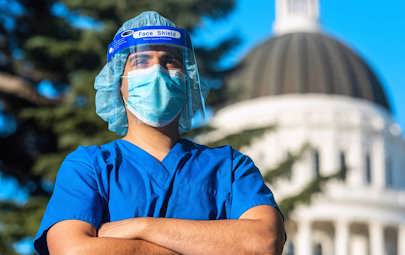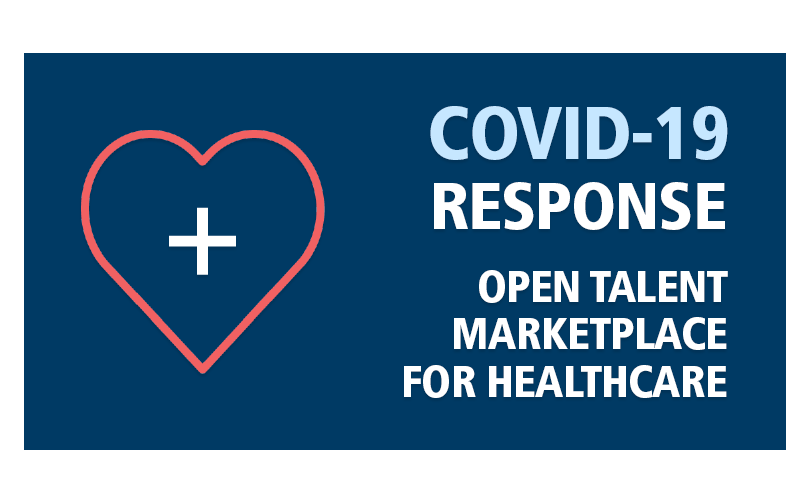
7 Ways Public Health Could Change Due to COVID-19
The novel coronavirus has brought public health to the forefront of people’s minds.
“Public health is vital to all of us, all of the time,” said Susan Swider, PhD, PHNA-BC, FAAN, a professor at Rush University College of Nursing in Chicago, quoting former Surgeon General C. Everett Koop.
“We want nurses to continue to be a valuable part of public health, and we can perhaps get on top of things like COVID-19, prevent them before they start or be a little less intense,” she said.
Public health nurses focus on improving an entire population’s health by emphasizing prevention and addressing inequalities, according to a definition by the American Public Health Association (APHA). During the current pandemic, they are testing people for the coronavirus, administering COVID-19 vaccines, promoting social distancing and providing education.
“Everyone should know more about public health,” said Lisa Carlson, MPH, MCHES, past president of APHA.
Potential changes in U.S. public health due to COVID-19
1. Expanding funding
“We have a cycle of public health funding, where there are crises, and we get a bolus of funding,” Carlson said. “Then things are under control and funds tend to decrease, and then we have another crisis, and we’re unprepared to deal with it, which is where we are right now.”
Carlson explained that when the funding goes away, so does the infrastructure to quickly deal with a public health threat.
APHA is advocating for $4.5 billion in additional funding for public health, for the Centers for Disease Control and Prevention (CDC) and local and state public health departments, which is about $13 per person in additional public health expense. That funding would be established with the passage of the Public Health Infrastructure Saves Lives Act (S 674).
“Hopefully, that would bring us back to be able to modernize, be prepared and fend off pandemics like this one in the future,” Carlson said.
On the other hand, some people are less optimistic. Robin Taylor Wilson, PhD, associate professor of epidemiology and biostatistics at Temple University College of Public Health in Philadelphia, said she cannot speculate as to what will happen regarding future funding for the public health workforce.
2. Hiring more people
Additional funding would allow for more hiring of public health personnel. Carlson reported that public health has lost more than 50,000 public health jobs since 2008.
“We need to do more hiring to have enough people to do this work,” Carlson said.
The Association of State and Territorial Health Officials (ASTHO) reported that in 2022, as public health workers almost continuously worked on COVID-19 and other public health issues, workers are facing physical and mental health challenges.
“In many places, the opposition to public health measures to address COVID-19 has led to threats and intimidation of public health officials causing several to leave their jobs,” ASTHO reported.
3. Addressing social determinants of health and health equity
Social determinants of health refer to factors that affect people’s health, such as unstable housing, poverty, unsafe neighborhoods and a lack of education, according to the CDC.
“There are big social issues that impact health and structural inequalities,” Carlson said. “All of those play a role in public health.”
Minorities have been disproportionately affected by COVID-19, which has drawn attention to inequities in the healthcare system. Crowded living conditions or many people in a home, increases someone’s risk of contracting COVID-19, Swider said.
“I hope we put attention to fixing these social and structural inequalities,” Carlson said.
ASTHO considers health equity a policy issue for 2022. Achieving it will require “investing additional resources in historically under-invested or disinvested communities.”
4. Embracing technology and telemedicine
The use of telemedicine has soared since the pandemic left broad swaths of the country closed, creating new ways for people to access healthcare. Many providers are managing medications and chronic conditions virtually.
“I think the dramatic acceleration is here to stay,” Carlson said. “This is an opportunity for us to learn how to do things differently.”
5. Maintaining public health legal authority
Many jurisdictions have rolled back public health’s legal authority to respond and mitigate infectious disease outbreaks, a concern for ASTHO.
“Maintaining the legal authority to prevent and control the spread of infectious disease is key to preparing for and addressing future disease outbreaks,” ASHTO said. “The recent reductions in public health legal authority will make it more difficult to respond to future disease outbreaks.”
6. Questioning the U.S.’s COVID-19 approach going forward
As COVID-19 surges yet again, some public health experts and former Biden White House advisers are recommending a new approach to the pandemic.
Ezekiel Emanuel, MD, a health policy expert at the University of Pennsylvania in Philadelphia, for instance, suggested the country consider living with COVID-19, not aiming to eliminate it, as is the current thinking. That would require investments in data infrastructure, public health workers, and allowing clinicians to practice across state lines. More testing also is needed.

7. Gaining appreciation
Anthony Fauci, MD, director of the National Institute of Allergy and Infectious Diseases at the National Institutes of Health, has become a household name. Regular briefings by local and state health officials have raised awareness of public health and the role leaders and practitioners in this field play.
Swider encourages all nurses and healthcare providers to understand public health and contribute to the education of society.
“We are not hearing enough from people saying, ‘Thank you for the work public health nurses are doing in fighting the good fight,’” Carlson concluded. “I appreciate the work everybody is doing.”
Keep up with the latest healthcare workforce trends with AMN Healthcare’s Insights, including comprehensive surveys, white papers, case studies and blogs from industry experts.



